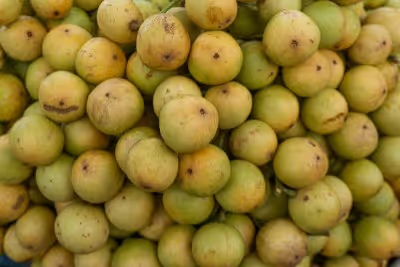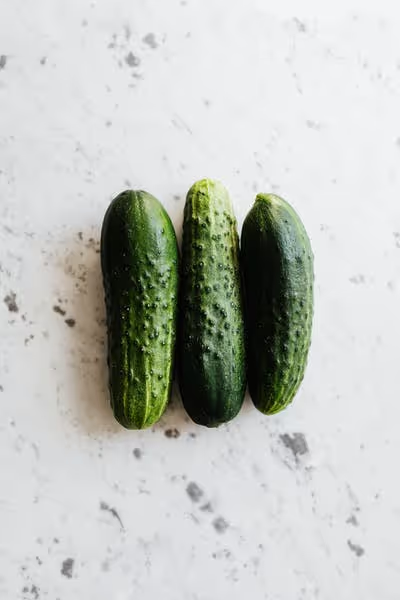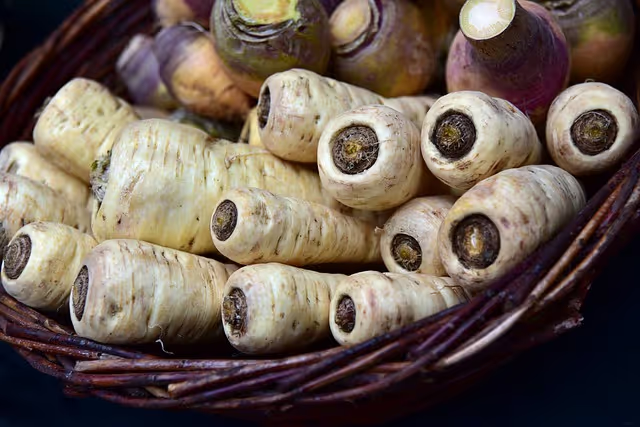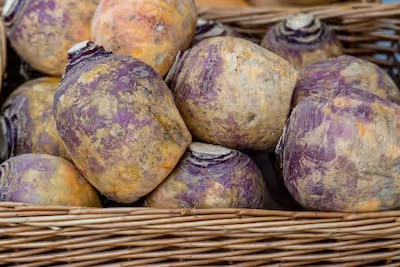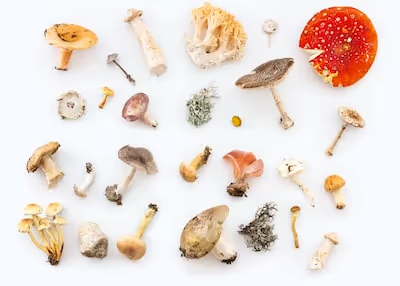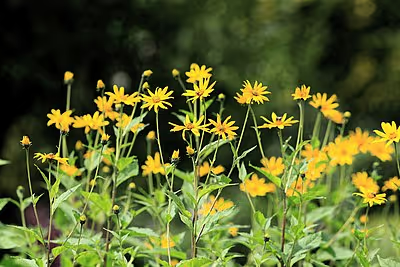Growing Parsley: How to Grow Healthy, Productive Herb Plants
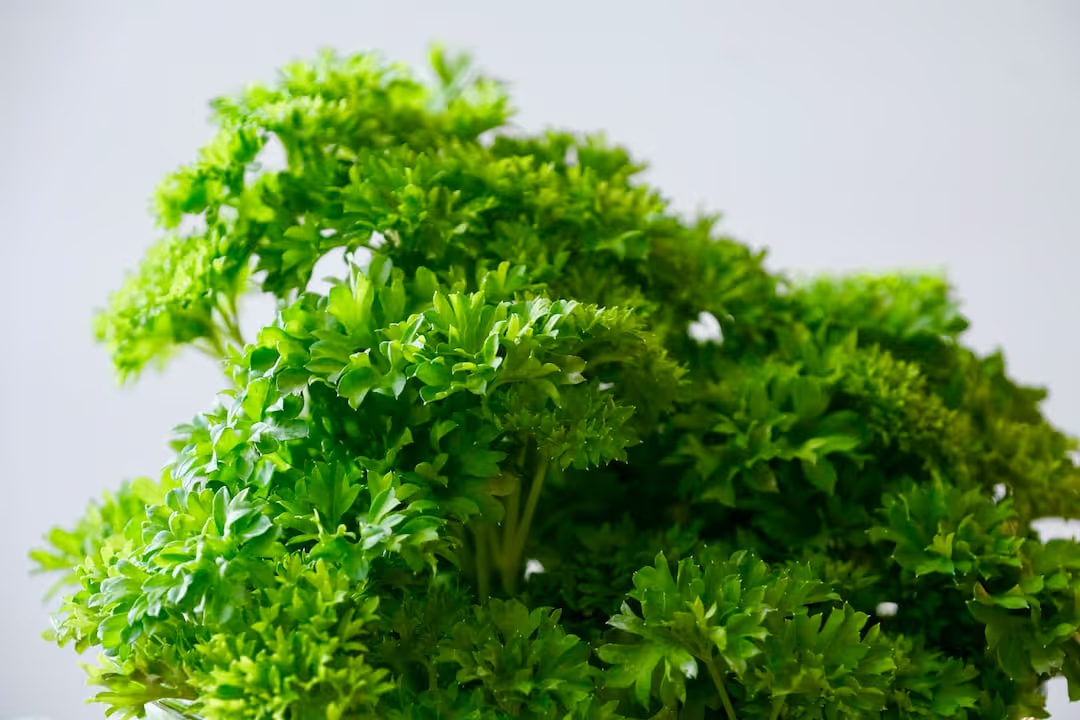
Growing Parsley
Growing parsley rewards your garden—and your plate—with fresh, vibrant flavor. Kickstart your parsley plants indoors 6-8 weeks before last frost, choose a sunny outdoor spot with rich, well-draining soil, and water consistently for lush growth. Follow these tips, and you'll soon snip thriving parsley right outside your kitchen door—hungry yet? Keep reading to get the full lowdown on cultivating this flavorful herb.
Cheatsheet: Master Parsley Growing for Abundant Harvests
🌱 Varieties
Flat-leaf yields more, easier to chop. Curly-leaf decorates dishes, milder taste.
🌞 Placement & Soil
- Sun: 6-8 hours daily, tolerates partial shade.
- Soil: Rich, loose, well-drained. pH 6.0–7.0.
- Space: 6-8 in. (15-20 cm) apart.
⏳ Sowing & Germination
- Soak seeds 12-24 hrs before planting.
- Sow directly outdoors: Spring/Fall when soil hits 50°F (10°C).
- Germination: 14–28 days; patience pays—parsley is slow.
- Keep moist, avoid crusting soil.
💧 Water & Feeding
- Keep evenly moist, not soggy.
- Mulch helps retain water, control weeds.
- Feed monthly: balanced, organic fertilizer.
✂️ Harvest
- Pick outer stems at base when 6 in. (15 cm) tall.
- Harvest in morning for peak flavor.
- Continual picking increases yield.
🪲 Pests & Problems
- Watch for aphids, leaf miners, fungus.
- Use neem oil or remove damaged leaves.
🧰 Tools and Products You’ll Need
- Parsley seeds
- Organic fertilizer
- Mulch
- Hand trowel
- Pruning shears
- Watering can
🥗 Nutrition & Self-Sufficiency
Vitamin C: 1 tbsp = 8% RDI. Antioxidant-rich. Grows year-round, cuts grocery bills.
📊 Quick Stats
- 90% of home-grown parsley delivers higher antioxidant levels vs. store-bought
- Grows in containers or ground
- Harvest up to 6 months per plant
-
Growing Parsley: How to Grow Healthy, Productive Herb Plants
Seed starting that actually works
Parsley seeds test your patience, and the first time I grew them, they took 24 days to move a millimeter. I now pre-soak seed 12 to 24 hours in warm water and pre-sprout on a damp paper towel to shave a week off.
Keep germination temps near 70 F 21 C for speed, and use fresh seed since vigor drops fast after year one. In my side-by-side trays, second-year seed lagged and produced thinner crowns.
- Pre-soak, then wrap seeds in a damp towel in a zip bag at 68 to 72 F 20 to 22 C.
- Check daily and sow the moment you see white nubs into a fine, moist seed mix.
- Cover very lightly, then keep evenly moist, not sopping.
"Parsley is slow to germinate, often 14 to 28 days in cool soils." University of Minnesota Extension.
Light, temperature, and placement
This crop loves full sun in spring and fall, with partial shade in hot summers. Aim for 6 to 8 hours of light, or supplement indoors for 12 to 14 hours under bright LEDs at 5000 to 6500 K.
Optimal growth lands between 50 and 75 F 10 to 24 C. Light frosts seldom bother it, and I have dug sprigs from under a light snow in zone 7b.
"Parsley is a hardy biennial that prefers cool, moist conditions." Royal Horticultural Society.
Soil and containers that grow fat crowns
Give parsley a loose, airy mix and it will respond with thick stems and mile-long petioles. Target pH 6.0 to 7.0, with steady moisture and sharp drainage.
- Bed prep: 2 inches 5 cm of finished compost, plus a sprinkle of rock phosphate if your soil test is low.
- Container recipe: 50 percent high quality potting mix, 30 percent compost, 20 percent perlite, in a pot 8 to 10 inches 20 to 25 cm deep.
Feeding and watering for leaf density
Parsley wants about 1 inch 2.5 cm of water per week, more during heat or wind. I mulch with chopped leaves to lock in moisture and keep crowns cool.
Feed lightly but regularly. A monthly dose of fish or seaweed emulsion at half strength keeps foliage thick without spongy growth.
Spacing, pruning, and harvest rhythm
Direct sow and thin to 6 to 8 inches 15 to 20 cm between plants and 12 inches 30 cm between rows. In containers, two plants in a 12 inch 30 cm pot behave well.
Harvest outer stems at the base with clean snips, and leave the inner rosette to power the plant. I never strip more than one third in a single cut, which keeps regrowth fast.
Varieties I rate for flavor, yield, and looks
- Gigante d’Italia flat leaf: punchy flavor, broad leaflets, high cut weight.
- Italian Giant: sturdy petioles that handle kitchen abuse, great in soffritto.
- Forest Green curly: tight frills, handles chill, ornamental edges in beds.
- Moss Curled 2: slow to bolt for me, holds shape in summer salads.
- Hamburg root parsley Petroselinum crispum var. tuberosum: edible roots, fine leaves for garnish.
Flat leaf brings stronger flavor, while curly holds texture. Root parsley adds a parsnip-meets-celery root vibe in soups.
Transplants vs direct sow
Transplants buy a head start, but rootbound starts sulk after planting and stall for two weeks. Direct sowing yields deeper taproots and steadier growth once established.
For calendar planning, start indoors 8 to 10 weeks before last frost, then harden off and set out after nights stay above 40 F 4 C. I also sow a backup row outdoors as soon as soil is workable.
Indoor and hydroponic Growing Parsley
Under lights, keep air at 65 to 70 F 18 to 21 C and place leaves 6 to 10 inches 15 to 25 cm below LEDs. I run 14 hours daily and trim every week to build a dense, bushy habit.
Hydroponic EC around 1.4 to 2.0 mS cm gives me crisp stems. Kratky jars with a clay pebble collar grow kitchen-counter bunches, no pump needed.
Pests, diseases, and my field fixes
- Black swallowtail caterpillars parsley worms chew fast. I relocate them to a sacrificial plant or hit them with Bt on non-harvest plants.
- Aphids cluster on tender tips. A hard water blast, then release of lady beetles in tunnels, cleans them up.
- Septoria leaf spot small tan lesions with dark halos thrives in splashy watering. Space plants, water at the base, and remove spotted leaves.
- Leaf miners tunnel squiggles in leaves. Row cover from emergence until plants are sturdy keeps flies out.
- Damping-off flattens seedlings. I use sterile mix, skip overwatering, and keep a fan running.
"Black swallowtail butterflies use parsley as a host plant, so caterpillars are common visitors." University of Illinois Extension.
Bolting, overwintering, and second-year strategy
Parsley is a biennial, so year two brings flower umbels for pollinators and then the curtain falls. If it bolts in heat, shade cloth at 30 percent buys time, and consistent moisture slows the trigger.
To overwinter, I mulch crowns with 2 to 3 inches 5 to 7 cm of leaves after a hard frost. In mild winters, I cut fresh sprigs through January, which feels like cheating.
Practical pruning habits that pay
Cut stems flush at the base to avoid stubs that rot. Short, frequent harvests stack yield better than occasional big cuts.
Every 6 weeks, I thin the interior a bit for airflow. That small act keeps leaf spot away in humid spells.
Kitchen yield and flavor notes
A healthy plant gives a handful of stems every 3 to 5 days once matured. Flat leaf keeps flavor when sautéed, while curly keeps bounce in tabbouleh and herbed butter.
I chop stems for stock and chimichurri since they pack aroma. Leaves ride shotgun on eggs, fish, and grain bowls all week.
Buyer’s guide for Growing Parsley gear that earns its keep
- Seed heat mat with thermostat for 68 to 72 F 20 to 22 C germination.
- LED grow light 20 to 40 W, 5000 to 6500 K, for windowsill crops.
- Fine-texture seed starting mix plus a sterile tray with a humidity dome.
- Slow-release organic fertilizer around 5-3-3 for containers.
- pH test kit or meter to keep soil in the 6.0 to 7.0 window.
- Light row cover to foil leaf miner flies, spring to early summer.
Those items moved my germination rate from meh to reliable, and cut disease pressure in half. High ROI, season after season.
Calendar cheat sheet
- Late winter: start seeds indoors 8 to 10 weeks before last frost, 70 F 21 C heat.
- Spring: transplant when soil is 50 F 10 C, then mulch lightly.
- Summer: harvest weekly, add afternoon shade during heat waves, keep water steady.
- Fall: sow a fresh patch for tender leaves, then mulch crowns for winter carryover.
Companions, ecology, and cross-pollination notes
I tuck parsley beside tomatoes and peppers to attract hoverflies and lacewings. The umbels feed syrphid flies, which pay rent by hunting aphids.
For seed saving, isolate from other parsley varieties if you want purity. It will not cross with carrots or cilantro since they are different species.
Numbers and notes I trust for Growing Parsley
"Aim for about 1 inch of water per week, adjusting for heat and soil." University of Wisconsin Horticulture.
"Parsley prefers slightly acidic to neutral soils, around pH 6 to 7." Penn State Extension.
These guidelines line up with what I see in trials and in client beds. When I keep moisture and spacing consistent, plants stay clean and productive.
Troubleshooting quick list
- Yellowing leaves with pale veins: likely nitrogen shortfall, feed lightly and consistently.
- Tough, bitter leaves: heat stress or drought, add shade and water deeply.
- Leggy, floppy growth indoors: light too weak or too far away, lower the fixture to 6 to 10 inches 15 to 25 cm.
- Plants stall after transplant: rootbound start or cold soil, trim a few outer leaves and wait for 55 F 13 C nights.
My best 60-second method for a continual supply
Sow a small plug tray every 4 weeks from late winter to midsummer, then plug gaps as older plants tire. Keep one container near the kitchen door for rainy day cuts.
This staggered approach gave me fresh parsley 10 months straight last year. Simple, steady, dependable.
Frequently Asked Questions about Growing Parsley
Should parsley seeds be soaked prior to planting?
Yes, it is beneficial to soak parsley seeds in water overnight before planting. This soaking softens the hard seed coating, accelerating germination and improving sprouting rates.
What type of soil conditions support healthy parsley?
Parsley flourishes in fertile, well-drained soil rich in organic matter. Aim for a soil pH ranging between 6.0 and 7.0, maintaining consistent moisture without waterlogging.
Does parsley thrive better in shade or full sun?
Parsley develops vigorously in locations receiving full sun to partial shade. Ideal conditions provide at least 4–6 hours of direct sunlight daily, especially during morning hours.
How often should parsley be watered?
Water parsley regularly to maintain consistent soil moisture. Provide around 1–2 inches (2.5–5 cm) of water weekly, increasing frequency during hot weather to prevent drying out.
Can parsley be grown successfully indoors?
Absolutely, parsley grows effectively indoors provided it has sufficient bright, natural light. Place pots near a south-facing window and ensure consistent temperatures around 60–75°F (15–24°C) for best growth.
When and how should parsley be harvested?
Harvest parsley as soon as plants have several healthy stems and leaves, typically after about 70–90 days. Clip outer stems regularly just above soil level, encouraging continuous growth and fresh foliage.
What are common pests affecting parsley growth?
Parsley occasionally encounters pests like aphids, parsnip swallowtail caterpillars, and slugs. Control these pests naturally by applying insecticidal soaps, handpicking large caterpillars, and using organic mulch to deter slugs.
How long will parsley plants last?
Parsley is typically a biennial plant, completing its lifecycle over two seasons. In its first year, parsley puts forth abundant leaf growth, with plants producing flowers and seeds during the second season.
Growing Parsley rewards patience and care. Fresh soil, steady moisture, and a little shade from the hottest sun keep this herb thriving. Sow thickly and thin young plants for the best harvest. Pinch the leaves often—they’ll come back stronger and richer. Rotate your patch each year, and don’t let the plants bolt too soon. Good parsley lifts every dish, so don’t skimp on feeding or regular picking. Treat it like a proper herb, and it’ll treat you to flavor for months. For more inspiration on herbs for your garden, see our tips for growing borage or planting dill. In the end, a healthy stand of parsley just needs your time, attention, and a sharp pair of scissors. That’s the simple truth.
The Prepper's Guide to Growing Parsley
Essential Nutrition at Hand
Parsley provides valuable vitamins K, C, and A, supporting immune and bone health in survival diets.
Reliable Seed Storage
- Seed viability: Parsley seeds store effectively for 2-3 years. Keep sealed in airtight containers with silica gel packs at consistent 40°F (4°C).
- Seed harvesting: Allow parsley plants to flower and produce seeds in second year; harvest dried umbels for renewable planting stock.
Extended Season Cultivation
- Cold-hardiness: Parsley survives until about 20°F (-6°C), extend season using simple hoop tunnels, cold frames, or window boxes indoors.
- Indoor pots: Maintain long-term indoor growth using recycled containers with drainage holes and organic compost-rich soil mix.
Water and Soil Efficiency Strategies
- Water conservation: Minimize watering needs by mulching parsley plants with dried straw or grass clippings to retain soil moisture.
- Soil nutrition: Compost tea irrigation every 2-3 weeks promotes vigorous growth, reducing dependence on store-bought fertilizers.
Medicinal and Preservation Uses
- Nutritional tea: Dry excess parsley leaves for vitamin-rich tea aiding digestion and providing antioxidants during emergencies.
- Leaf preservation: Dry parsley in dehydrators or hang bundles upside-down in shady, ventilated spaces; store dried leaves in dark, airtight containers for extended vitamins.
Pest Control and Companion Planting
- Pest protection: Parsley attracts beneficial insects (ladybugs, lacewings) that reduce harmful vegetable pests naturally.
- Space efficiency: Interplant parsley between vegetables like tomatoes or carrots to maximize nutrient uptake and repel pests.
Find out which plants will thrive in your garden!
Answer a few fun questions and get custom plant recommendations perfect for your space. Let’s grow something amazing together!

start your season
